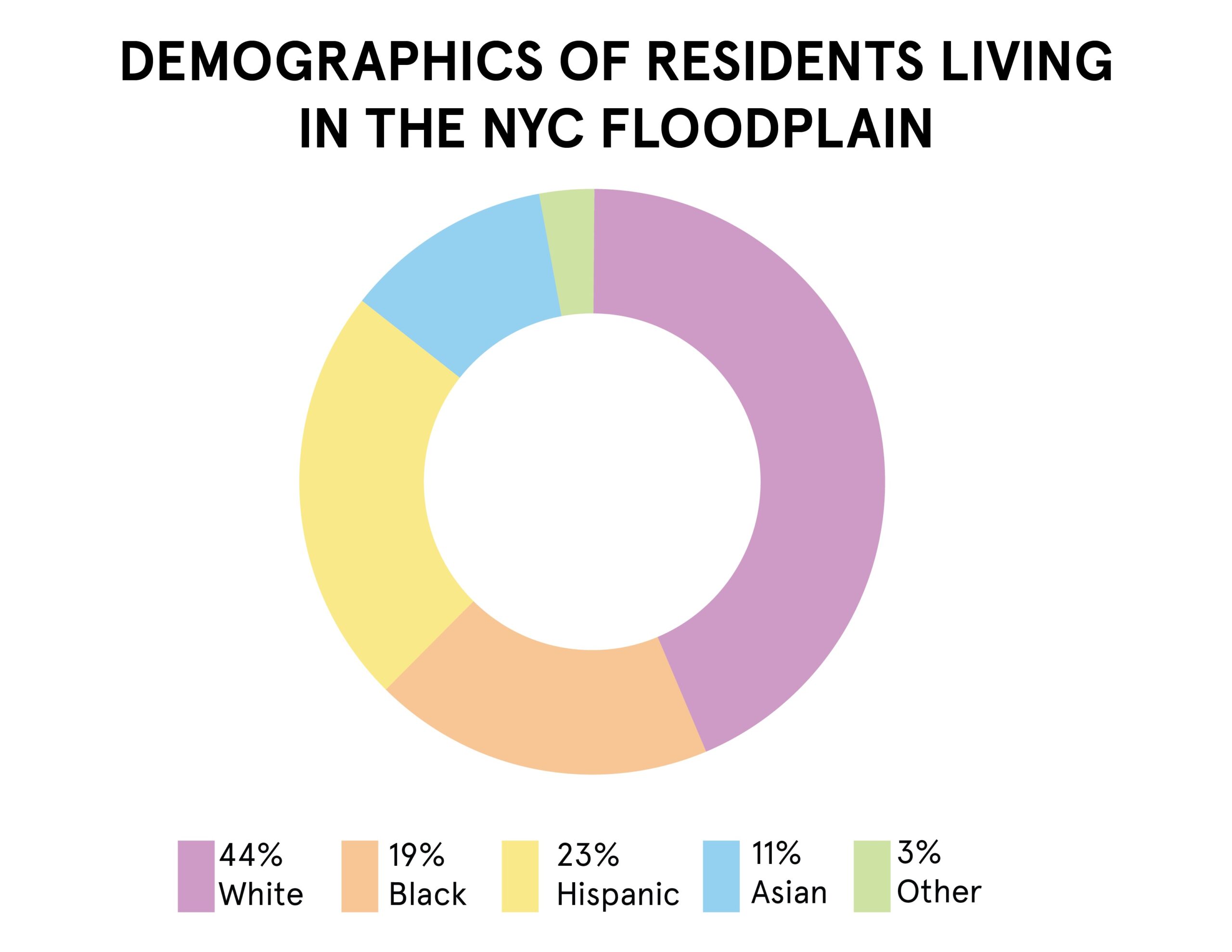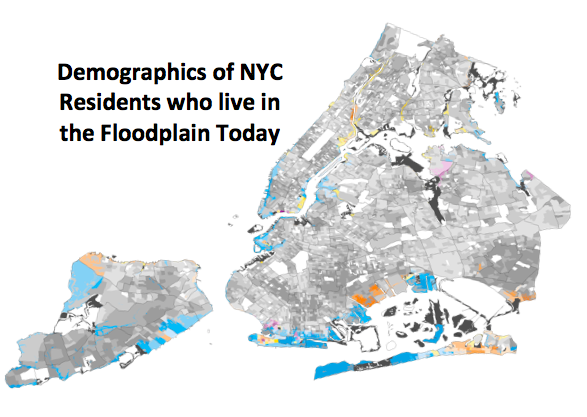1.3 Million New Yorkers are at Risk
Currently, 1.3 million New York City residents live within or directly adjacent to the floodplain. By 2100, this number could rise to 2.2 million.
Who Lives in the Floodplain?
56% of the residents within or directly adjacent to the floodplain identify as non-white.
Who Can Afford Another Storm?
More than half of the floodplain residents live in areas with a median income less than $75,120, which is considered low income for New York City for a family of three.
As climate change causes a rise in sea levels and increases the likelihood of flooding and major storms, we need to better understand who will be at risk during these events. Analyzing the floodplain reveals a larger story – the number of New Yorkers who are highly vulnerable to increased coastal storms is even higher than New York City has accounted for. We found that 14 percent of New Yorkers – 1.3 million people – live within or adjacent to the 100-year floodplain. Those communities have a 1% chance of experiencing a major disaster every year. If the impacts of climate change are left unabated, by 2100, this number could rise to 2.2 million.
Past disasters, such as Hurricane Sandy, and our recent experience with Covid-19, have laid bare the reality that these events disproportionately hurt the most vulnerable populations which can include characteristics such as socioeconomic status, race, ethnicity, language, age, health, and household composition.
Using the American Community Survey (2018) population data, all NYC block groups that intersect the 100-year floodplain were included. A block group is a contiguous cluster of census blocks, or city blocks.
Download maps here: Citywide, The Bronx, Manhattan, Queens, Brooklyn, and Staten Island.
Rebuild by Design sincerely thanks NRDC for collaboration on this project, along with Johanna Lawton, Nina Ndichu and Geethanjali M R.
*Methodology below

Climate Change Increases Inequities
Low-income communities experience greater challenges evacuating due to the cost of transportation and relocation, placing them at a greater risk of injury, disease, or death.
Climate Change Disproportionately Affects Credit Scores
The Urban Institute has found that after 4 years, a medium-sized disaster has caused an average 31-point decline in credit scores for people living in communities of color, whereas people living in majority white communities experienced a 4-point decline.
Climate Change Increases Debt
A medium-sized natural disaster leads to a 5% increase in the share of people with debt collections after one year, which doubles to 10% after four years.
METHODOLOGY:
According to US Housing and Urban Development’s (HUD) 2018 income brackets, a family of 3 is considered low income if their household income is less than $75,120.
The current floodplain boundaries are derived from PFIRM 2015. The 2050 floodplain is derived from NPCC3’s 2050 100-year floodplain projection. The 2100 floodplain is derived from NPCC3’s 2100 100-year floodplain projection.
These numbers are higher than New York City’s own estimates for multiple reasons: 1) These maps use data from American Community Survey which provides only block groups from 2018. New York City uses census data from 2010; 2) New York City used an approach which counts floodplain blocks as those census (city) blocks whose geographic center intersects the PFIRM 2015 floodplain.
Rebuild by Design chose an approach to include all block groups that touch the floodplain because we were able to use updated data, it gives a clearer picture of who will be most affected. For instance, if the block next to yours flooded, there is a high likelihood that your block would be affected since you may not be able to go to the grocery store on that block, use that street for public transportation, or access the school nearby. In the end, the exact location matters less than the overall effect it has on the community and the City.
